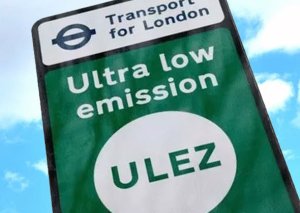 Introduction: London’s air quality has been a concern for decades, with vehicle emissions playing a significant role in the city’s pollution levels. The Ultra Low Emission Zone (ULEZ) was introduced to address this issue by targeting the most polluting vehicles. This article examines the impact ULEZ has had on improving air quality in London.
Introduction: London’s air quality has been a concern for decades, with vehicle emissions playing a significant role in the city’s pollution levels. The Ultra Low Emission Zone (ULEZ) was introduced to address this issue by targeting the most polluting vehicles. This article examines the impact ULEZ has had on improving air quality in London.
Air Quality Issues in London: Air pollution has long been a problem in London, with sources ranging from industrial emissions to traffic congestion. Historical data indicates that levels of nitrogen dioxide (NO2) and particulate matter (PM) have consistently exceeded safe limits set by the World Health Organization (WHO). These pollutants are known to cause severe health issues, including respiratory and cardiovascular diseases, and are linked to premature deaths. Prior to ULEZ, it was estimated that air pollution contributed to over 9,000 premature deaths in London annually.
Mechanics of ULEZ: The ULEZ was introduced in April 2019 to combat these alarming statistics. It operates 24/7, 365 days a year, covering the same area as the Congestion Charge Zone. Vehicles must meet strict emissions standards to enter the zone without being charged: Euro 4 for petrol cars, Euro 6 for diesel cars, and similar standards for motorcycles and heavy vehicles. Non-compliant vehicles are charged £12.50 per day for cars, vans, and motorcycles, and £100 per day for lorries, buses, and coaches.
Statistical Evidence: Since the implementation of ULEZ, significant improvements in air quality have been recorded. According to a report by the Greater London Authority, NO2 concentrations within the ULEZ decreased by approximately 44% between February 2017 and September 2020. Additionally, PM2.5 levels dropped by around 27% in the same period. These reductions are attributed directly to the ULEZ, as areas outside the zone saw smaller declines in pollution levels.
Case Studies: Several areas within the ULEZ have demonstrated notable improvements in air quality. For instance, Brixton Road, one of London’s most polluted streets, saw NO2 levels fall by nearly 50% following the introduction of ULEZ. Similarly, monitoring stations in the ULEZ reported a significant reduction in harmful pollutants, illustrating the zone’s effectiveness in targeted areas.
Health Benefits: The health benefits of ULEZ are substantial. Reduced levels of NO2 and PM have led to a decline in respiratory illnesses and hospital admissions related to air pollution. A study by King’s College London found that the ULEZ could prevent around 1,000 hospital admissions for asthma and other respiratory conditions by 2025. Furthermore, the overall improvement in air quality is expected to enhance the quality of life for residents, particularly children and the elderly who are more vulnerable to pollution.
Economic Impact: While ULEZ has clear health benefits, it also brings economic considerations. Businesses within the zone have faced increased costs, particularly those reliant on older vehicles for logistics and deliveries. However, the long-term economic benefits, such as reduced healthcare costs and increased productivity due to a healthier population, are expected to outweigh these initial expenses. The Mayor of London’s office estimates that the health benefits alone could save the NHS up to £5 billion by 2050.
Public Perception: Public opinion on ULEZ has been mixed but generally positive. Surveys conducted by Transport for London (TfL) indicate that a majority of residents support ULEZ, recognizing its importance for public health and environmental sustainability. Interviews with local business owners reveal concerns about the financial burden, but many acknowledge the necessity of such measures for long-term benefits.
Conclusion: The ULEZ has proven to be a successful strategy in improving air quality in London. The significant reductions in NO2 and PM levels highlight the effectiveness of targeting vehicle emissions. However, sustaining these improvements will require additional measures, such as expanding the ULEZ boundaries, enhancing public transportation, and providing more incentives for electric vehicle adoption. Overall, the ULEZ serves as a model for other cities grappling with air pollution, demonstrating that bold environmental policies can lead to substantial public health and economic benefits.




